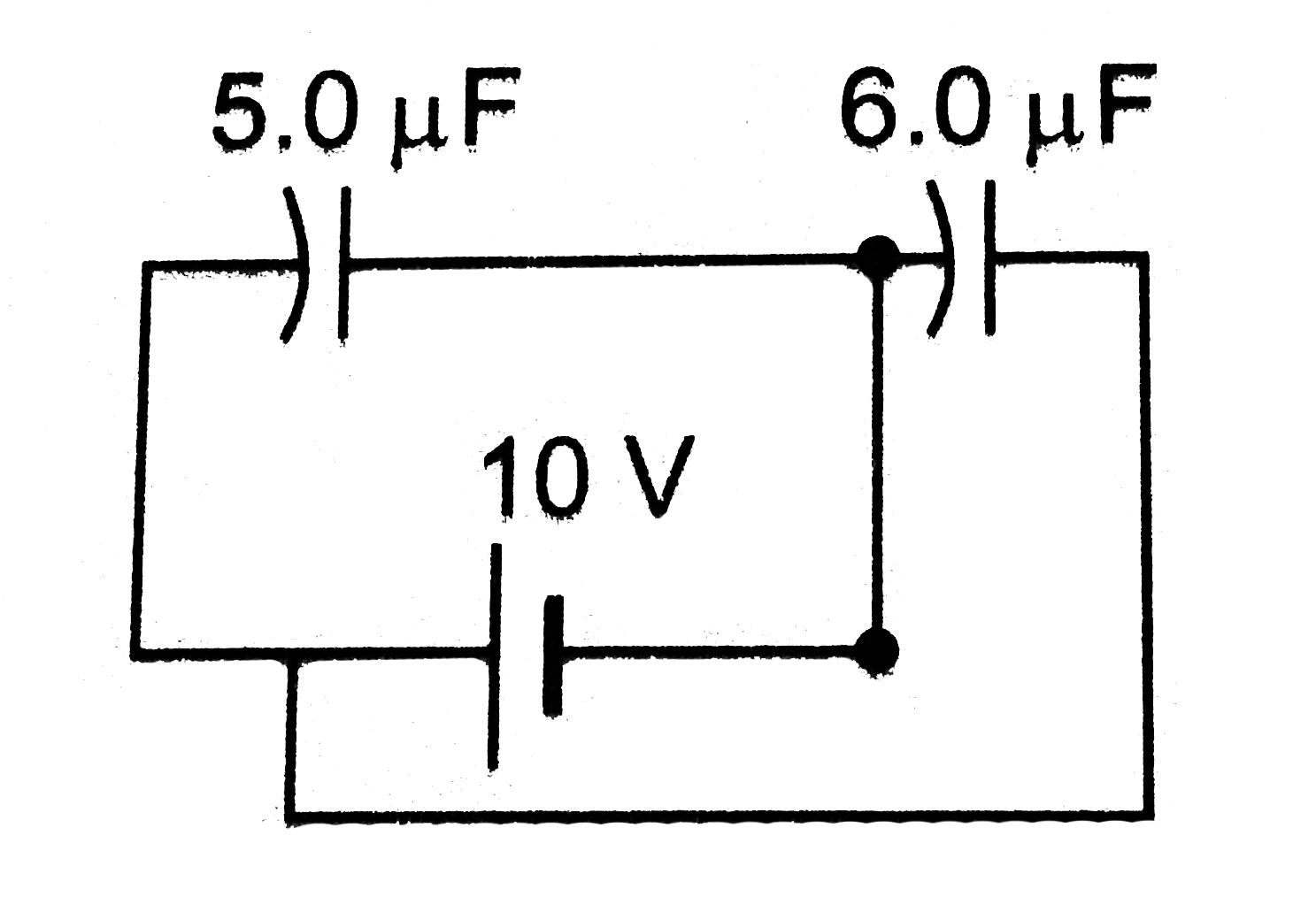Figure shown an arrangement of three points charges. The total potential energy of this arrangement zero. The ratio qQ is :

Usys=14πε0[−qQr+(+q)(+q)2r+Q(−q)r]=0
−Q+q2−Q=0 or 2Q=q2 or qQ=41
Topper's Solved these Questions
- ELECTROSTATICSBOOK - MOTIONCHAPTER - ELECTROSTATICSEXERCISE - SELF MISCELLANEOUS PROBLEM (Example )
15 Videos
- ELECTROSTATICSBOOK - MOTIONCHAPTER - ELECTROSTATICSEXERCISE - SELF PRACTICE PROBLEM
27 Videos
- ELECTRONICS - SEMI CONDUCTORBOOK - MOTIONCHAPTER - ELECTRONICS - SEMI CONDUCTOREXERCISE - EXERCISE - 3
29 Videos
- ELECTROSTATICS - I BOOK - MOTIONCHAPTER - ELECTROSTATICS - I EXERCISE - EXERCISE - 4 (Level -II) PREVIOUS YEAR - JEE ADVANCED
13 Videos
Similar Questions
The arrangement is as shown below

Find the potential energy of the loop.
View SolutionIs it possible to have an arrangement of two point charges separated by finite distances such that the electric potential energy of the arrangement is the same as if the two charges were infinitely far apart? What if there are three charges?
View Solution
Knowledge Check
Three charges −q,+Q and −q are placed in a straight line as shown

If the total potential energy of the system is zero, then the ratio qQ isA2B5.5C4D1.5The figure shows a arrangement of capacitors and a battery.

If the potential of C is zero, thenAVA=+20VB4(VA−VB)+2(VD−VB)=2VBC2(VA−VD)+2(VB−VD)=4VDDVA=VB+VDCharges−q,Q,and−q are placed at an equal distance on a straight liner. If the total potential energy of the system of three charges is zero, then find the ratio Q/q.
 .A1/2B1/4C2/3D3/4
.A1/2B1/4C2/3D3/4
Find charge supplied by the battery in the arrangement shown in figure.

View SolutionIn the shown figure shown

a. Find q1 and q6
b. total electrostatic potential energy .
View SolutionThree charges are placed as shown in fig if the electric potential energy of system is zero, then Q : q-

View SolutionFigure shows a hemisphere of charge Q and radius R and a sphere of charge 2Q and radius R. The total potential energy of hemisphere is UH and that of the sphere is Us Then.

View SolutionThe potential energy of a charged conductor of charge (q) and potential (v) is given by
View Solution
